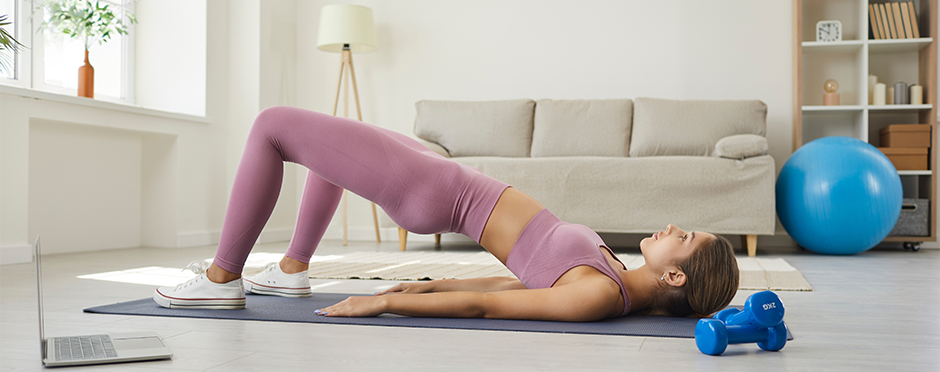
We’ve Got Your Back: 5 Tips For A Healthy Spine
Leave a CommentA robust and healthy spine is crucial for overall well-being, supporting mobility, posture, and daily functionality. As a physical therapist, I encounter numerous cases where preventive measures make a significant difference in maintaining spinal health. In this blog post, I’ll share five essential tips based on my experience and current research to ensure your spine stays strong and resilient. Let’s embark on a journey toward a healthier, happier back!
1. Regular Exercise For Spinal Strength
Regular exercise is a cornerstone of spinal health, improving muscle strength, flexibility, and overall spine stability1. Incorporate a well-rounded fitness routine that includes both aerobic exercises and strength training.
For spinal health, focus on exercises targeting the muscles surrounding the spine. Research published in the “Journal of Orthopaedic & Sports Physical Therapy” emphasizes the importance of strengthening these muscles in reducing the risk of lower back pain2. Include movements such as planks, bridges, and back extensions to build resilience and support for your spine.
2. Prioritize Safe Lifting Techniques
Improper lifting techniques are a common cause of back injuries. When lifting heavy objects, start with a wide stance, bend at the knees, and keep the object close to your body. Avoid twisting while lifting, as this places excessive strain on the spine.
By incorporating safe lifting practices into your daily routine, you significantly reduce the risk of spine-related injuries and even prevent lower back pain3.
3. Maintain A Healthy Weight
Maintaining a healthy weight is crucial for spinal health. Excess body weight, especially around the abdominal area, places additional stress on the spine, contributing to conditions such as herniated discs and degenerative disc disease4.
Adopting a balanced diet and incorporating regular exercise into your routine can help manage weight and reduce the strain on your spine. In turn, this can help decrease your risk of developing pain and discomfort in your lower back5.
4. Prioritize Quality Sleep
Quality sleep is often overlooked in discussions about spinal health. There is a direct relationship between sleep quality and back pain6. Poor sleep can exacerbate back pain, while chronic pain can disrupt sleep patterns.
Invest in a supportive mattress and pillows that align with your spine’s natural curvature. Ensure your sleeping posture is conducive to spinal health – support yourself with pillows to assist with maintaining a comfortable position. Additionally, establish a consistent sleep routine, creating an environment conducive to restful and restorative sleep.
5. Seek Professional Guidance
While incorporating these practices into your routine, consider seeking professional guidance from a physical therapist. Physical therapists conduct thorough assessments to identify specific weaknesses or imbalances in the muscles supporting the spine. With this information, they can tailor a personalized exercise program to strengthen these areas effectively.
Physical therapists can also provide guidance on proper form and technique, ensuring that your exercise routine is not only beneficial but also safe. Regular check-ins with a physical therapist can help track your progress and make necessary adjustments to your program.
A resilient and healthy spine is within reach for everyone, and the journey toward spinal well-being begins with small, consistent steps. By prioritizing regular exercise for strength, safe lifting techniques, maintaining a healthy weight, prioritizing quality sleep, and seeking professional guidance, you can fortify your spine against the challenges of modern living.
As a physical therapist, I aim to empower you with knowledge and practical strategies to safeguard your spinal health. Remember, these tips are not just about avoiding pain but about supporting your overall health and vitality. Incorporate these habits into your daily routine, and your spine will thank you with years of pain-free movement and functionality.
*Per federal guidelines, beneficiaries of plans such as Medicare, Medicaid, Tricare, VHA and other federally funded plans are not eligible for free assessments.
The Athletico blog is an educational resource written by Athletico employees. Athletico bloggers are licensed professionals who abide by the code of ethics outlined by their respective professional associations. The content published in blog posts represents the opinion of the individual author based on their expertise and experience. The content provided in this blog is for informational purposes only, does not constitute medical advice and should not be relied on for making personal health decisions.
References:
1. Wang, Y., Videman, T., Battié, M. C., & Kaprio, J. (2016). Variations of lumbar lordosis and sagittal pelvic parameters among individuals varying in age, race, and sex: a cluster analysis. The Journal of Orthopaedic and Sports Physical Therapy, 46(7), 517-525.
2. Hides, J. A., Stanton, W., Wilson, S., Freke, M., McMahon, S., Sims, K., … & Richardson, C. (2011). Retraining motor control of abdominal muscles among elite cricketers with low back pain. Scandinavian journal of medicine & science in sports, 21(6), 833-840.
3. Hartvigsen, J., Hancock, M. J., Kongsted, A., Louw, Q., Ferreira, M. L., Genevay, S., … & Woolf, A. (2018). What low back pain is and why we need to pay attention. The Lancet, 391(10137), 2356-2367.
4. Samartzis, D., Karppinen, J., Mok, F., Fong, D. Y., Luk, K. D., & Cheung, K. M. (2012). A population-based study of juvenile disc degeneration and its association with overweight and obesity, low back pain, and diminished functional status. The Journal of Bone and Joint Surgery. American Volume, 94(3), 149-155.
5. Heuch, I., Hagen, K., Heuch, I., & Nygaard, Ø. (2010). The impact of body mass index on the prevalence of low back pain: the HUNT study. The Spine Journal, 10(1), 26-32.
6. Kovacs, F. M., Seco, J., Royuela, A., Corcoll, J., Alegre, L., Tomás, M., … & Martínez, C. (2017). The association between sleep quality, low back pain and radiculopathy in the last trimester of pregnancy. European Journal of Pain, 21(1), 74-84.
